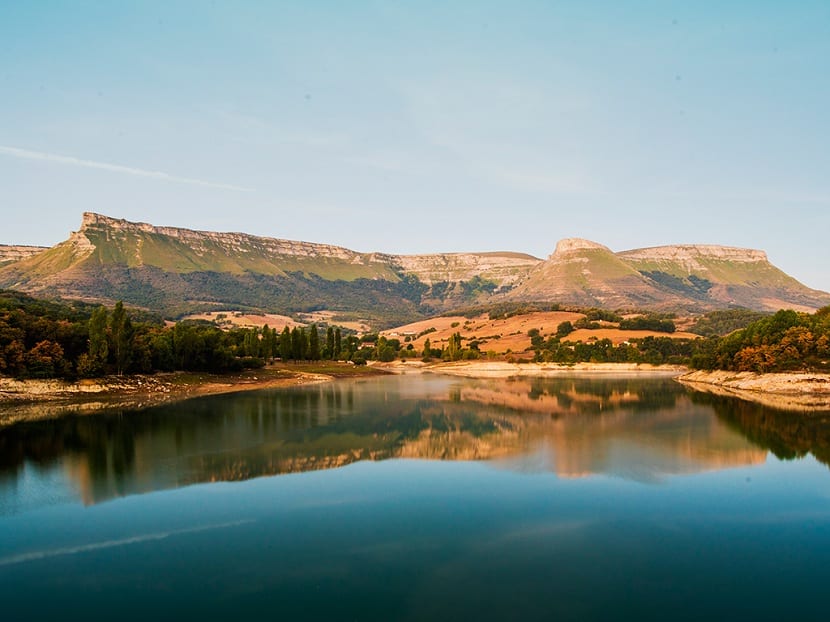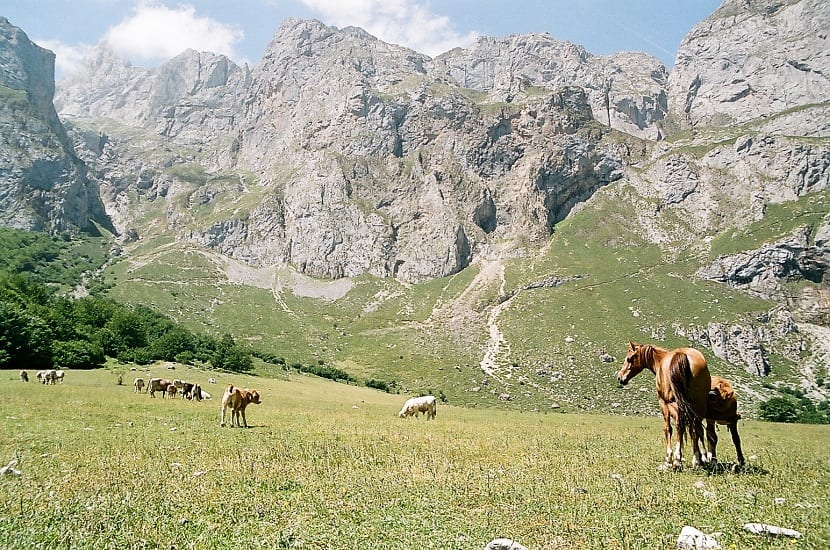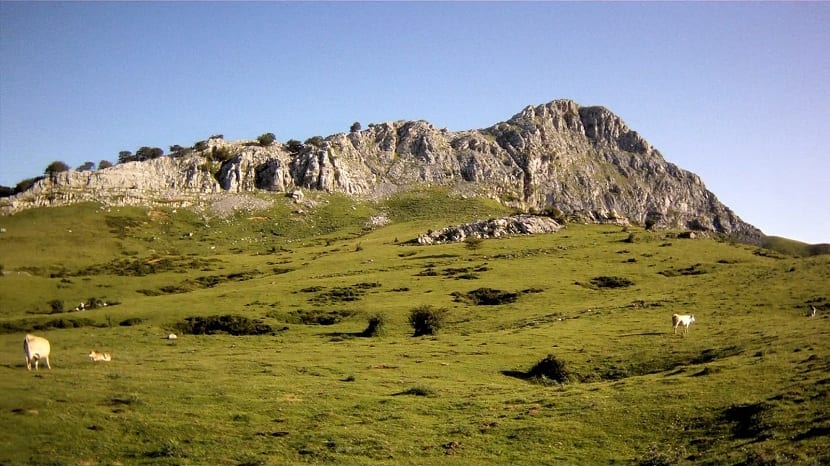
The Basque Mountains It is the name given to a mountain range that is located at the northern end of the Iberian Peninsula. It is located in the easternmost part of the Cantabrian mountain range and links with the Pyrenees. It is also known by other common names such as the Basque Arch, Basque depression and Basque threshold. Its extension covers part of the territory of the Basque Country and Navarra. These mountains not only give us a natural spectacle with incredible landscapes, but are characterized by having a part of history full of traditions, mythologies, customs and legends.
In this article we are going to tell you everything you need to know about the geology and characteristics of the Basque Mountains.
Key features

The diversity and the wide extension of the terrain in which the Basque Mountains develop does not cease to amaze. This is because it has a characteristic vegetal environment of the humid Atlantic climate. Deciduous forests display fascinating beauty at certain times of the year, such as autumn. Mainly, this plant environment is made up of beech, oak, yew and birch. Not only do you have species that are deciduous, but you also have them evergreen. This combination makes it even more colorful.
Among the evergreen species we find the holm oak and the famous pine. This pine has been introduced by humans to be able to exploit its wood. If you go to the Basque Country to do tourism, the Basque Mountains is a route that you should not skip. The peaks are usually about 1.600 meters high.
These mountains are divided between the 3 provinces, none of which is less important than the other. We find the emblematic Aizkorri massif which, although it is not the highest of all, is the best known. Its height reaches 1.528 meters and they look up to reach the Aitxuri. This is the highest mountain with 1.551 meters. In this mountainous formation, the Arbelaitz, which is 1513 meters high, should also be highlighted.
Another of the important peaks of the Basque Mountains is Gorbea with a height of 1.481 meters. Although it is not one of the highest, it is one of the best known in the Basque peaks. This does not stop here, if we start to list all the peaks, we find the mountains of Álava and Aratz, Palomares, Cruz del Castillo, etc.
Traditions of the Basque Mountains

As we have mentioned before, the Basque Mountains not only have good tourist attractions for hiking. We also find curious traditions that are nice to know. For example, the cheese tradition of the Cantabrian Mountains has that of Idiazabal cheese. It is a cheese whose origin resides in these places. It is made with raw Carranzana and Latxa sheep milk and since time immemorial the rich pastures have been used to make the cheese better. There is talk of a cheese with a flavor that pleases the most demanding palates. It has some variants such as smoked and unsmoked cheese. They both taste extraordinary.
Geology

The Basque Mountains are divided into two alienations. One is the northern and the other southern. These two divisions are mostly limestone in nature. There are also some terrains with sandstones and other materials. As we mentioned before, the peaks are not too big but they do offer incalculable beauty due to the vegetation.
It has gentle slopes and ravines and rock cuts abound in some of the limestone complexes. In these crevices and ravines quite a lot of vultures live. This relief is economically exploited by people who are fond of climbing. In the Amboto massif, in the Atzarte gorge is the most important rock climbing school in all of Spain.
These mountains have had their formation during the alpine folding that existed. The genesis was also conditioned to the formation of the Pyrenees. The difference from the established areas is that in the western and eastern interior it is mainly composed of limestone materials. On the other hand, the eastern part of the coast is full of siliceous rock.
We then distinguish a relief in which we find a "low Basque Country" with mountains of small heights below 1.000 meters and a high Basque Country with mountains higher than 1.000 meters. Both are separated by a hydrographic network. The mountains reach the sea and form protruding cliffs. The most famous is Cabo Matxitxaco.
Climate

Since we are on a meteorology page, the climate of the Basque Mountains could not be missing. These mountains form a division of the Mediterranean and Atlantic basins. The northern part has a milder climate and is a Oceanic climate. This climate is best known in what we know as "Green Spain." On the other hand, south of the mountain range and inland the climate is mediterranean and with some features of the Continental weather. In this area there is less precipitation and it is colder in terms of temperatures. This is very noticeable in the difference in temperatures from coastal towns to inland mountain towns.
Broadly speaking, it could be said that the entire mountain range has high levels of rainfall. It is common to see fogs in the valleys due to changes in temperature and the humidity present.
It has a snow cover although it is quite irregular during the winter season. Above 700 meters it is more common to find snow between the months of November to April. However, environmental conditions are always changing and snow may not accumulate for long. The same snow that can accumulate in large quantities due to weather conditions, can melt due to Foehn effect. This sudden change in temperatures and melting snow often causes some flooding in Álava.
I hope that with this information you can learn more about the Basque Mountains and encourage you to visit it because you will not regret it. If you have any questions about it, let us know in the comments.